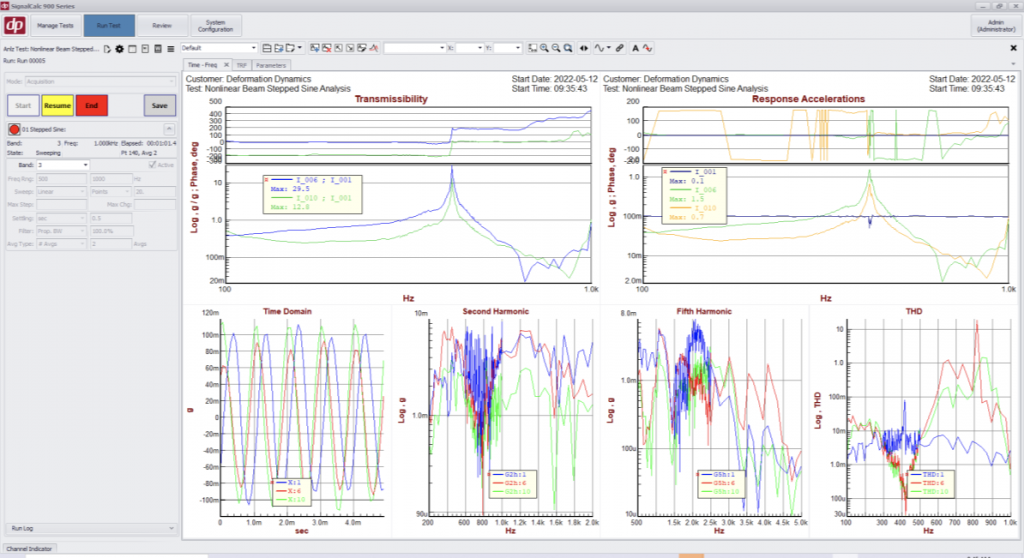The latest software release for SignalCalc signal analysers and controllers features the latest generation of stepped sine
The recently released Version 1.6 software from Data Physics for the company’s SignalCalc 900 Series Signal Analysers and Controllers now features the latest generation of Stepped Sine, as well as numerous new features and improvements — along with enhanced ease of use capabilities.
Stepped sine measurement can be programmed to operate in an open loop or a closed loop. In the open loop case, the system excites the structure by sending a constant sine output from the internal signal generator. Whereas in the closed loop case, the system controls to a constant level from a specific input channel.
It is common in stepped sine measurements to break the measurement into a series of bands, each with its own setup. It is possible to select finer resolution in areas of particular interest, boost the source level where the system response is known to be low, just move more slowly near resonances, or control to a constant input channel level.
Stepped Sine Analysis
Stepped sine testing measures system frequency responses under particularly challenging conditions when the system under test exhibits an enormous dynamic range or the signal-to-noise ratios are poor or when the system must be measured whilst operating or when non-linearities complicate the picture. These are the areas where stepped sine becomes the most appropriate method to use.
In a stepped sine test, the analyser directs an internal signal generator to create a steady sine wave at one frequency and the system response is measured just at that frequency. The data point is stored, the signal generator is adjusted to a new frequency and, after a pause, the system transient response settles out and the measurement is repeated for the new point.
Frequency response functions are built up from hundreds of individual measurements, each at a single point. Each measurement’s signal-to-noise ratio is improved by the concentration of the signal and analysis on a single frequency, while noise remains scattered over the full bandwidth of the system.
New features and enhancements in Version 16
The new version provides the capability to update Channel Table Information in 900 Tests from Microsoft Excel so channel data can be loaded from an Excel document into SignalCalc 900.
High Speed Shutdown (Soft Shutdown) is also supported. This is a safety feature that protects high-value test articles from damage during the testing process. It is ideal when used with the Data Physics soft shutdown amplifier/shaker system.
Large Databases or many 900 Series Units Sharing a Data Server can be optimised. These optimisations ensure fast operation when test databases get large or when a database has tens or hundreds of thousands of runs.
Random Vibration Tests can be resumed from any stage of the run schedule or a sine test can be resumed at any frequency.
The software also enables faster Time History Recording Transfers when using Multiple Chassis, improving the time taken to transfer a Time History Recording from multiple 900 Series Hardware units to the PC (Data Server).
Version 1.6 allows the user to perform database searches for specific sensor and shaker serial numbers. This search takes place across all the tests in the database for a specific sensor serial number, shaker model, shaker name, or system serial number.
These enhancements are complemented by a number of other improvements and positive changes in useability.
- UK manufacturing steps up to COVID-19 crisis - April 2, 2020
- Clustering Innovation - March 12, 2020
- A Global Monitor - March 6, 2020

